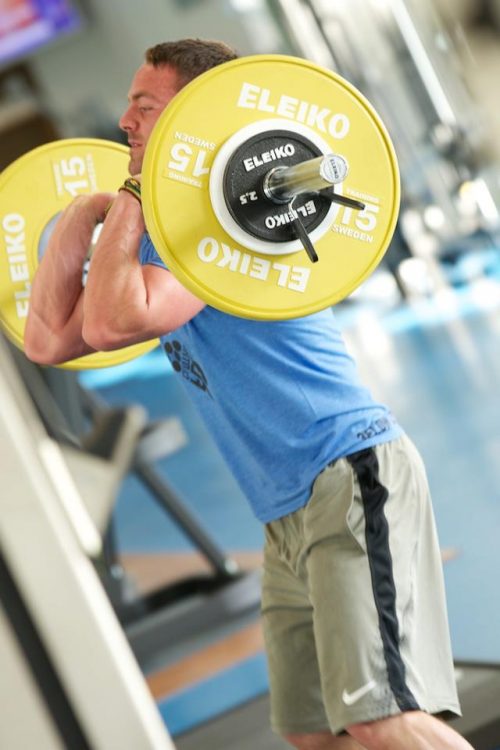For this article / blog post I am referring to using tempos in the weights room. Yes, you can do running tempos but that is a different topic all together. So, tempo training in the weight room. Generally speaking, the eccentric portion (downward) phase of a lift is where most tempo training happens. Controlling the speed at which descend in a movement can have multiple benefits. Tempo training can also include isometric holds at certain points within the lifts. Again, there are a number of benefits and reasons people may use this type of training (I will list those below). However, I want to talk about why I feel tempo training is a great tool in terms of coaching, particularly with youth athletes.
3 Major Physiological Benefits of Tempo Training
As mentioned, eccentric and isometric tempos can have multiple benefits. Rather than go into each one in great detail, I will simply give a brief description of the main features. If you fancy a bit of a deeper read into eccentric training particularly, check out this paper from 2015. So, the potential benefits of tempo training.
- Improved hypertrophy. By stretching the muscle while under load you can induce greater muscle damage. In turn, this can stimulate a greater response from protein synthesis pathways. Meaning can achieve greater muscle growth.
- Neural adaptations are increased. This means that your mind-muscle connection is improved. The greater ability to fire motor units results in greater force being produced. Placing accentuated stress on the nervous system by controlling your decent is a great way to improve your ability to fire your muscles effectively.
- Both eccentric training and isometric holds have also been shown to improve tendon health.
Tempo Training as a Coaching Tool
We know that tempo training can be good for both strength and hypertrophy and tissue health. However, I believe youth strength and conditioning coaches can use them as a coaching tool, regardless of the other benefits. Why and how?
- Technique – having an athlete take 3-5 seconds to descend in a squat requires them to have a great deal of control in the positions. Controlling the downward phase gives them longer to ensure they are in a good position. Further, pausing at the bottom of a squat is hard! if they don’t have good technique, they simply won’t be able to hold this position successfully.
- Time – As a coach, you may have 5-20 athletes in one session, maybe even more. If you simply load them up and let them shoot up and down, it is very hard to see what is going on. Using tempo work means you have time to see exactly what is going on with an athlete. You have a chance to see their faults come out. Sitting at the bottom of a squat, rather than bouncing straight out can tell you a lot about an athlete’s ankle mobility.
- Building foundations – moving something slowly requires much more attention and focus from an athlete. Using tempos from the word go not only improves their strength and hypertrophy but their focus and concentration in the weights room. This means you don’t need to overload the volume as everything they do from day 1 is with intent and focus.
A Final Note as a Youth Strength Coach
Many of the tools as a Personal Trainer in Berkshire are the same as those I use as a Strength Coach for youth athletes. I often use tempo training when I first meet a new client. It just gives us both time to learn about how they move and how we can progress. It also breaks them in slowly (literally). If you are interested in learning more about how and why I implement tempo training, please get in touch and I will be happy to chat to you.
